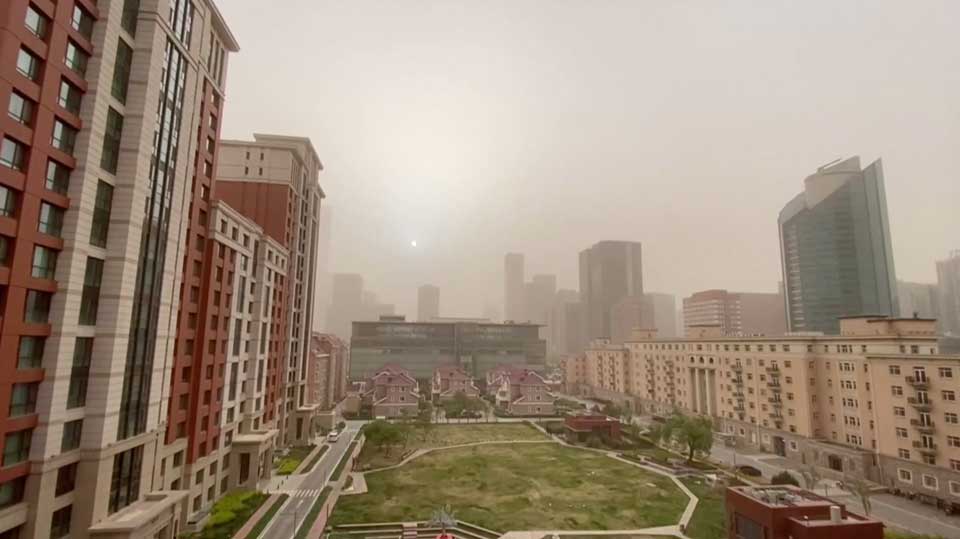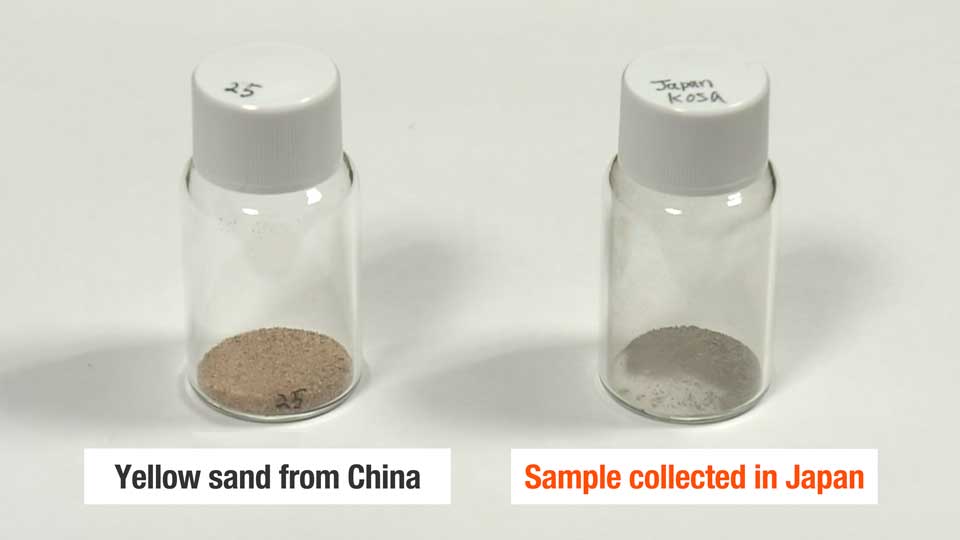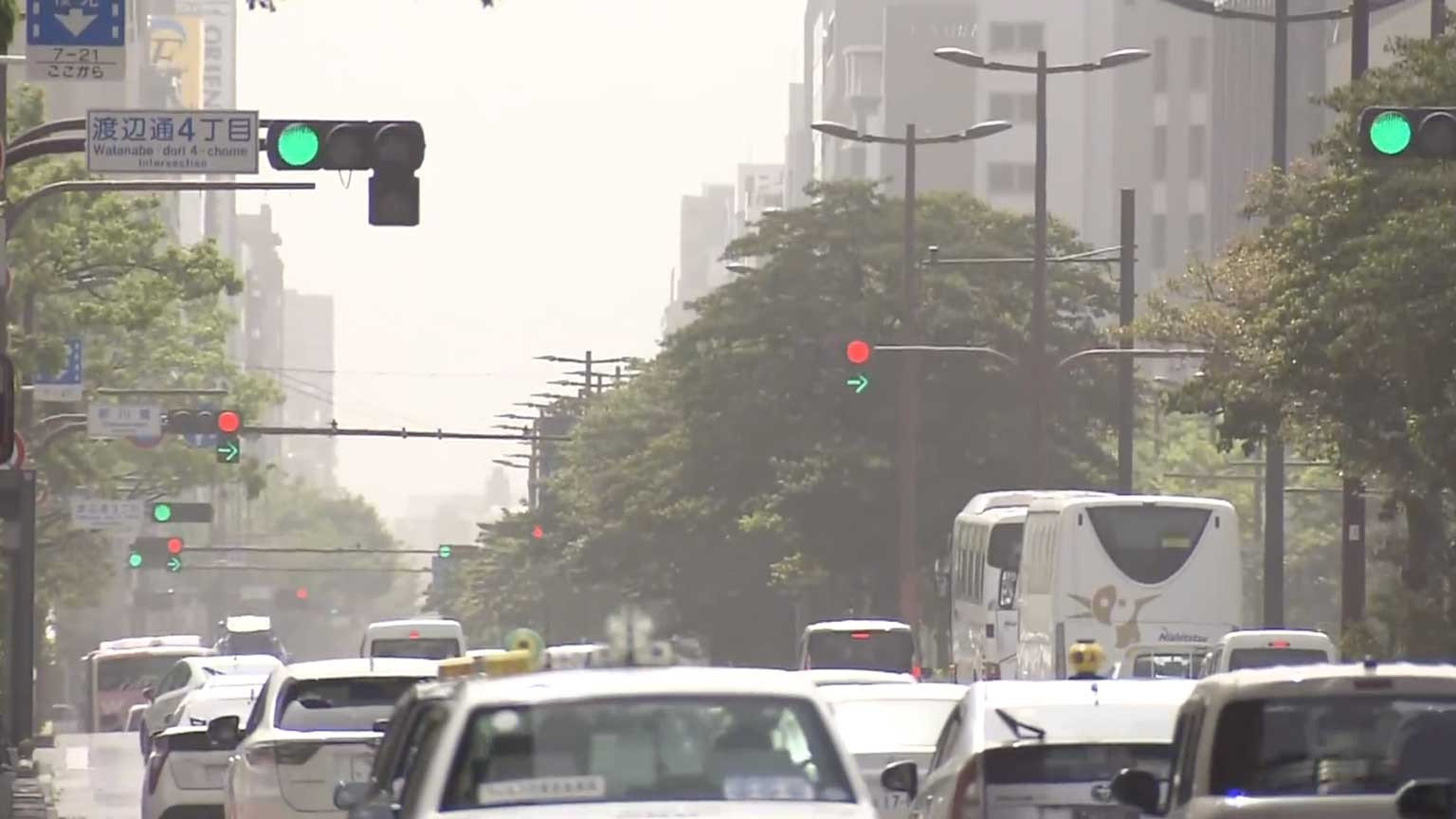The Meteorological Agency says sand carried by northwesterly winds was observed on Wednesday in the western prefectures of Shimane, Fukuoka, Saga, Nagasaki, Yamaguchi, Tottori and Hiroshima.
Yellow sand is likely to blow into more regions toward northern Japan through Thursday. Visibility will be five to ten kilometers at best.
Officials at the agency say poor visibility could disrupt traffic and are urging drivers to take extra precautions.
Spring winds cause sandstorms in Japan
Yellow sand originates in China's desert regions, where strong winds can pick up massive amounts of it. Sandstorms are often reported in Japan in spring.
Kids asked not to play outdoors
At a nursery school in the city of Goto, in the western prefecture of Nagasaki, children have been asked not to play outside.
The children spent time indoors on Wednesday, playing with blocks and drawing pictures.

The nursery's head teacher, Kubo Satsuki, says that at this time of the year, teachers check news about yellow sand in the morning and decide whether or not to allow outside play.
Yellow sand sweeps across Beijing
Massive sandstorms have been hitting China's capital this week. The air pollution level in Beijing was briefly at the worst level on the 6-tier index on Monday and Tuesday.
NHK World's Beijing bureau said on Tuesday that vehicles have been covered with yellow dust and the impact is being felt everywhere in the city.

A resident in his 30s told NHK that the impact is serious and that even indoors he can smell sand. He said the dust affects his ability to drive safely.
Another resident in her 40s said she feels that the sandstorms have grown more frequent.

China's state-run Xinhua News Agency quotes an expert as saying that scant rainfall in northern China and Mongolia, along with strong seasonal winds, have been making sandstorms more frequent.
Expert: Sand attached to air pollutants
Onishi Kazunari, associate professor at St. Luke's International University, says comparing yellow sand collected in China with that coming to Japan, the color is different, and it's slightly blackish.
He says that the yellow sand has been covered with various kinds of air pollutants, including pollen.

"Yellow sand stimulates people's mucosa through respiratory organs, and affects health by mixing with pollen and air pollution," says Onishi.
He advises people to avoid exposure to yellow sand by reducing time spent outside and shutting windows. Onishi also recommends drying laundry indoors, as well as changing clothes as soon as getting home.

Yellow sand appears in Vladivostok
Sandstorms are also affecting Vladivostok, the central city of Russia's Far East, on Wednesday.
Local weather authorities say they have received multiple inquiries from residents about gritty air conditions and what appears to be mud on the surface of cars.

Officials say yellow sand has been blown in from China and Mongolia over the past few days due to westerly and northwestern winds, which they say is typical of the region.
